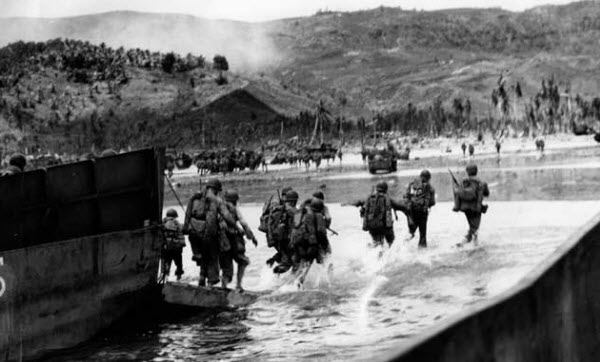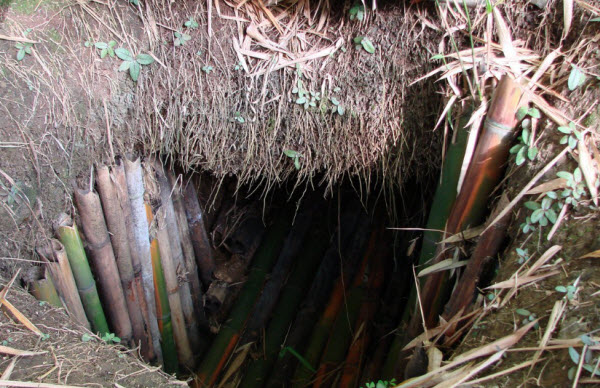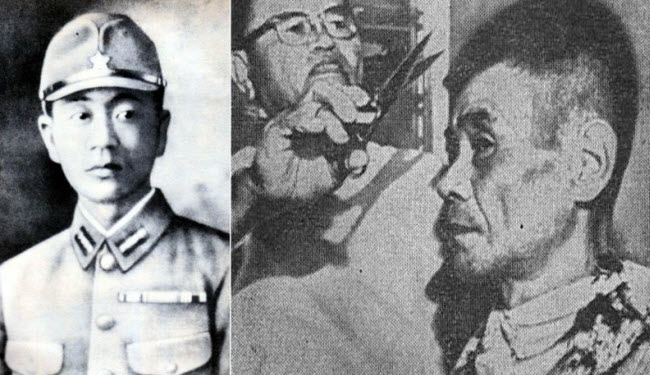History books tell us that World War II officially ended in 1945, but for some of the soldiers stationed in remote areas, the reality was quite different. One such soldier was Shoichi Yokoi, a member of the Imperial Japanese Army who had no idea the war had ended. He was the last known survivor of a 20,000-man Japanese garrison stationed on the island of Guam in the Pacific. While most of his comrades were killed in fierce battles with American forces, Yokoi managed to escape into the dense interior of the island. He survived in isolation for almost 28 years, hiding in a self-dug cave and emerging only at night to forage for food, unaware that Japan had long since surrendered to the United States.
Yokoi’s incredible story began in January 1972 when two local fishermen in Guam stumbled upon a man in tattered clothes setting handmade traps for shrimp. Startled by the sight of strangers, he tried to flee, but the fishermen captured him and took him to the authorities. The man they found was Shoichi Yokoi, a former soldier who had been living in isolation for nearly three decades, believing the war was still ongoing. Born in 1915 in Aichi Prefecture, Japan, Yokoi had been drafted into the army in 1941 after a previous rejection due to his frail health. He served in the 29th Infantry Division and was later transferred to the 38th Regiment in the Mariana Islands, arriving in Guam in 1943.

When American forces recaptured Guam in 1944, Yokoi’s unit was decimated, with over 90% of the garrison wiped out in intense combat. Those who survived fled into the jungle, including Yokoi and a small group of soldiers. Over time, the group dwindled. Seven soldiers eventually left, and Yokoi was left with two others. For years, they lived in isolation, occasionally visiting each other until his companions died—one of illness and the other likely from poisoning—leaving Yokoi completely alone by 1964.
For the next eight years, Shoichi Yokoi survived in solitude, living off the land and the small creatures he could catch. His military uniform disintegrated in the tropical heat, so he learned to weave fibers from tree bark into clothes. His handmade garments not only protected him from the elements but also became a mental lifeline. “Keeping busy with the daily tasks of survival was perhaps what kept me sane,” he would later say. He dug an intricate tunnel system to avoid detection and even invented a coconut-shell filter to reduce smoke from his underground cooking fires. His diet consisted of shrimp, frogs, and rats, and he ingeniously raised giant toads in his cave to fend off cockroaches and provide companionship.
At the time of his discovery in 1972, Yokoi was 56 years old and weighed only 41 kilograms. Despite suffering from mild anemia, malnutrition, and the loss of several teeth, he was in surprisingly good health. His careful routine of boiling drinking water, bathing regularly in a stream, and exercising had kept him fit. Doctors in Guam found that his diet had kept his heart healthy, though his protein levels were low. Yokoi had long since lost interest in anything beyond survival, especially as his knowledge of the outside world was almost nonexistent.
Shoichi Yokoi had no idea that the world had drastically changed since his disappearance. When asked by reporters, he admitted he had never seen television and didn’t know that men had walked on the moon. He even asked if Franklin Roosevelt was still President of the United States, only to be told Roosevelt had been dead for 26 years. Although he had heard loudspeakers announcing Japan’s surrender in the early years of his jungle life, Yokoi didn’t believe them. His upbringing in a fiercely nationalist and militarized society convinced him that the Imperial Japanese Army would fight to the death. So, he chose to remain in hiding rather than face what he saw as the dishonor of surrender.

In March 1972, Yokoi returned to Japan, where he was greeted by thousands of well-wishers and curious onlookers. Millions watched his arrival on television as he humbly declared to the cheering crowds, “I return with great embarrassment.” His words became famous across Japan, encapsulating his sense of shame for not dying in battle, as he believed a soldier should. Yokoi confessed that he had known the war was over since 1952 but had chosen to stay hidden out of fear of dishonor. He explained that soldiers were told, “It is better to die than be captured alive.” The people of Japan were both sympathetic and fascinated by his story.


Yokoi’s makeshift survival tools became a national sensation, with thousands lining up to see them on display in a Tokyo department store. After a brief tour of the media circuit, he settled back into life in Japan, where he became a television personality and advocate for simple living. Though he never met Emperor Hirohito, Yokoi visited the Imperial Palace and stated, “Your Majesties, I have returned. I deeply regret not having served you better. The world may have changed, but my loyalty to serve remains the same.” Yokoi lived out the rest of his days peacefully until he passed away from a heart attack in 1997 at the age of 82.



Shoichi Yokoi was not the last Japanese soldier to emerge from hiding, as two others were discovered in the years following his return. However, he was the first to resurface after 12 quiet years, during which Japan had largely moved on from the trauma of World War II to become a thriving democracy. Yokoi’s extraordinary story remains a reminder of the war’s long-lasting impact on individuals and the strength of the human will to survive.
